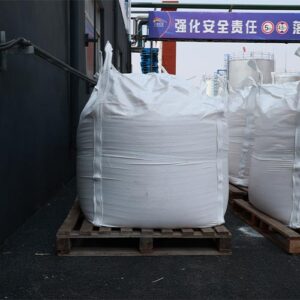Giới thiệu
In the realm of chemistry, reactions are a symphony of molecular interactions that unveil new compounds and transformations. Sodium formate, a versatile compound with diverse applications, engages in an intricate chemical ballet when it encounters acids. This article embarks on a journey to explore the captivating choreography of reactions that unfold when sodium formate interacts with acids, delving into the mechanisms, products, and the scientific complexities that underlie this chemical pas de deux.
- Giới thiệu
- The Dance Partners: Sodium Formate and Acids
- Understanding Acid-Base Reactions
- Dạng muối natri's Role as a Base
- Mechanisms of Reaction
- Neutralization Reactions
- Formation of Salts
- Applications Beyond the Dance
- Buffer Solutions
- tổng hợp hóa học
- Intricacies and Factors Influencing the Dance
- Câu hỏi thường gặp
- Sự kết luận
The Dance Partners: Sodium Formate and Acids

In the captivating world of chemical reactions, sodium formate takes the stage alongside its counterparts—acids. These chemical dance partners engage in a delicate interplay, orchestrating transformations that unfold in a realm of molecular intricacy.
Understanding Acid-Base Reactions
At the heart of this chemical ballet lies the concept of acid-base reactions. Acids, known for their ability to donate protons (H+) in solution, encounter bases that readily accept these protons, resulting in the formation of new compounds.
Dạng muối natri‘s Role as a Base
Sodium formate steps into the spotlight as a base in these reactions. With its capability to accept protons, it participates in neutralization reactions that counterbalance the acidic properties of the reactants.
Mechanisms of Reaction
Neutralization Reactions
The dance commences as sodium formate, a base, interacts with an acid. The proton donated by the acid is accepted by sodium formate’s formate ion (CHO2-) component, resulting in the formation of water and a salt.
Formation of Salts
The formation of salts is a hallmark of the dance between sodium formate and acids. The specific salt produced depends on the acid involved in the reaction. For example, when sodium formate reacts with hydrochloric acid (HCl), sodium chloride (NaCl) and formic acid (HCOOH) are formed.
Applications Beyond the Dance
Buffer Solutions
Sodium formate’s ability to participate in acid-base reactions lends itself to the creation of buffer solutions. These solutions, crucial in various applications, maintain a stable pH by resisting drastic changes when acids or bases are added.
tổng hợp hóa học
The dance between sodium formate and acids extends beyond neutralization reactions. It plays a role in chemical synthesis, where formic acid produced as a product of the reaction can serve as a precursor in various reactions.
Intricacies and Factors Influencing the Dance
pH and Concentration
The pH and concentration of reactants influence the dance’s tempo and outcome. Different pH levels and concentrations can lead to varying reaction rates and products.
Temperature and Catalysts
Temperature serves as a conductor in the chemical ballet, influencing the rate and equilibrium of reactions. Catalysts, as unseen choreographers, can enhance the efficiency of the dance by lowering activation energy.
Câu hỏi thường gặp
Q1: Can sodium formate react with all types of acids?
A1: Sodium formate can react with a variety of acids, but the specific reaction and products depend on the acid’s properties and the reaction conditions.
Q2: Does the dance between sodium formate and acids generate heat?
A2: Yes, some acid-base reactions, including those involving sodium formate, can be exothermic and release heat as a byproduct.
Q3: Are there practical applications where sodium formate’s acid-base reactions are utilized?
A3: Yes, sodium formate’s participation in acid-base reactions has applications in creating buffer solutions, chemical synthesis, and pH control in various industries.
Sự kết luận
The chemical ballet between sodium formate and acids is a captivating performance that showcases the transformative power of chemical reactions. As sodium formate gracefully accepts protons, it forms new compounds that extend beyond the confines of the laboratory. From buffer solutions to chemical synthesis, the dance reverberates across industries and applications, underscoring the intricate connections between molecular interactions and the world around us.


